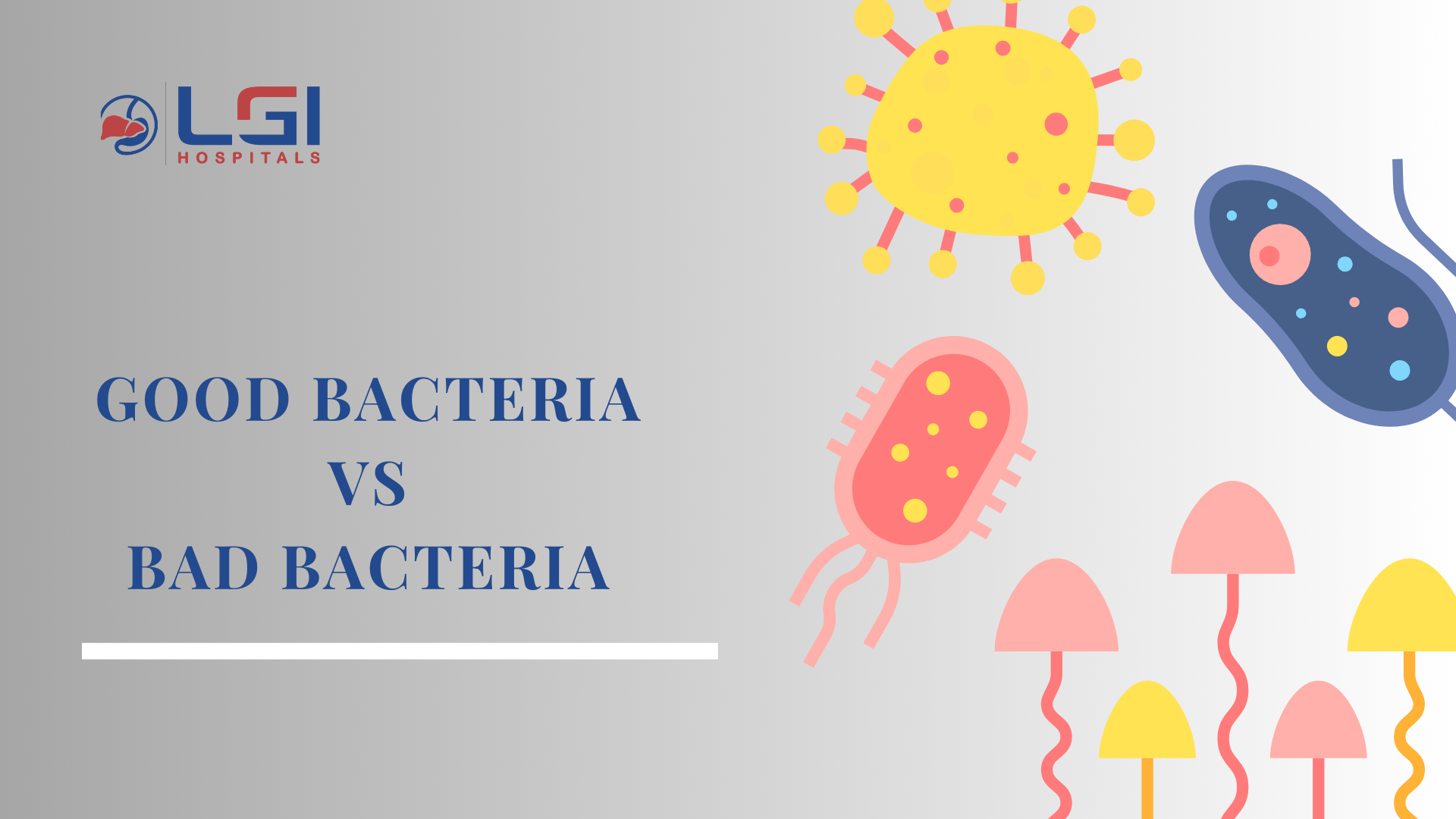Gut health is a critical aspect of overall wellness, heavily influenced by the balance of good bacteria vs bad bacteria within the gastrointestinal tract. The gut microbiome, comprising trillions of bacteria, plays a pivotal role in maintaining health. However, not all bacteria are beneficial. Understanding the difference between good and bad bacteria, and their effects on gut health, is essential for optimizing overall health.
The Role of Gut Health in the Body
Gut health extends far beyond digestion, impacting multiple systems in the body. The gutbrain axis is a wellestablished communication network that links the gut and brain, influencing mental health, mood, and cognitive functions. Additionally, gut health is intrinsically linked to the immune system, with approximately 70% of the immune cells residing in the gut. Thus, maintaining a balanced gut microbiome is crucial for both physical and mental health. Let’s learn about good bacteria vs bad bacteria.
Good Bacteria: The Beneficial Microorganisms
Good bacteria, also known as probiotics, are essential for various bodily functions. These microorganisms support digestion, enhance nutrient absorption, and produce vital vitamins. Prominent examples of good bacteria include:
Lactobacillus: Commonly found in fermented foods such as yogurt, this bacterium aids in the digestion of lactose and supports gut health.
Bifidobacterium: Predominantly located in the intestines, Bifidobacterium helps maintain the integrity of the gut barrier and prevents the colonization of harmful bacteria.
Saccharomyces boulardii: A beneficial yeast that protects against gastrointestinal disorders, particularly diarrhea.
Bad Bacteria: Harmful Microorganisms
Bad bacteria, in contrast, can disrupt the delicate balance of the gut microbiome, leading to health issues. These harmful microorganisms can proliferate when the gut environment becomes imbalanced, often due to poor diet, stress, or antibiotic use. Key examples of bad bacteria include:
Escherichia coli (E. coli): While some strains are harmless, others can cause severe foodborne illness and infections.
Clostridium difficile (C. diff): A bacteria that causes severe diarrhea and inflammation of the colon, often associated with antibiotic use.
Salmonella: A common cause of food poisoning, leading to gastrointestinal distress and, in severe cases, hospitalization.
Maintaining the Balance Between Good and Bad Bacteria
A healthy gut is characterized by a predominance of good bacteria vs bad bacteria , which help suppress the growth of harmful microorganisms. Several factors can disrupt this balance, allowing bad bacteria to proliferate:
Dietary Choices: Diets high in refined sugars and processed foods can encourage the growth of bad bacteria, while fiberrich diets support beneficial bacteria.
Stress: Chronic stress has been shown to alter the composition of the gut microbiome, favoring harmful bacteria.
Antibiotic Use: Antibiotics can indiscriminately kill both good and bad bacteria, leading to a disruption of the gut microbiome.
Sleep Deprivation: Lack of sleep can negatively affect gut health, potentially leading to an imbalance of the microbiome.
Strategies to Support Good Bacteria
Promoting the growth of good bacteria is essential for maintaining gut health. Effective strategies include:
Balanced Diet: Consuming a diet rich in fiber, fruits, vegetables, and whole grains supports the growth of good bacteria.
Fermented Foods: Incorporating foods such as yogurt, kefir, and sauerkraut, which are high in probiotics, can boost beneficial bacteria in the gut.
Probiotic Supplements: Probiotic supplements can help restore and maintain a healthy balance of gut bacteria, particularly after antibiotic use.
Stress Management: Implementing stress-reducing practices such as meditation and regular exercise can help maintain a balanced gut microbiome.
Adequate Sleep: Ensuring sufficient sleep is crucial for supporting overall gut health and maintaining a balanced microbiome.
The Immune System and Gut Health
The gut plays a significant role in immune function, with good bacteria acting as a defense mechanism against harmful pathogens. A healthy gut microbiome helps regulate immune responses and reduces the risk of infections. Conversely, an overgrowth of bad bacteria can weaken the immune system, making the body more susceptible to illnesses.
Gut Health and Mental Wellbeing
The gut-brain axis is a critical link between gut health and mental wellbeing. Good bacteria produce neurotransmitters such as serotonin, which play a crucial role in regulating mood and mental health. An imbalance in the gut microbiome has been associated with mental health disorders, including anxiety and depression.
Gut Health and Weight Management
The gut microbiome influences metabolism and weight management. Good bacteria help regulate energy absorption and fat storage, while an imbalance favoring bad bacteria can contribute to obesity and metabolic disorders. Maintaining a healthy gut microbiome is essential for effective weight management.
Indicators of Poor Gut Health
Signs of an imbalanced gut microbiome include:
Gastrointestinal disturbances (bloating, gas, diarrhea, constipation)
Unexplained weight fluctuations
Skin conditions (acne, eczema)
Frequent infections
Mood disorders (anxiety, depression)
Restoring Gut Health
If an imbalance in gut health is suspected, steps should be taken to restore equilibrium. This may involve dietary adjustments, probiotic supplementation, and lifestyle modifications such as stress reduction and improved sleep hygiene. You can visit LGI Hospital for better diagnosis and treatment. Best doctors are available in Nagpur for the gut health.
Preventing Bad Bacteria Overgrowth
Preventing the overgrowth of bad bacteria is key to maintaining a healthy gut. This can be achieved through:
Healthy Diet: Prioritizing nutrient-dense, fiber-rich foods.
Hydration: Staying wellhydrated to support digestive health.
Regular Exercise: Engaging in physical activity to promote gut motility.
Mindful Antibiotic Use: Avoid unnecessary antibiotic use to prevent disruption of the gut microbiome.
The balance between good vs bad bacteria in the gut is fundamental to overall health. A healthy gut microbiome supports digestion, boosts the immune system, and influences mental well-being. By fostering the growth of good bacteria and curbing the proliferation of harmful bacteria, one can achieve optimal gut health and overall wellness.
Frequently Asked Questions
1. What are examples of good bacteria?
Examples of good bacteria include Lactobacillus, Bifidobacterium, and Saccharomyces boulardii. These probiotics are essential for digestive health, nutrient absorption, and immune function.
2. What is an example of bad bacteria?
Bad bacteria include Escherichia coli (E. coli), Clostridium difficile (C. diff), and Salmonella These pathogenic bacteria can cause infections, food poisoning, and other health complications.
3. What is the difference between good and bad microorganisms?
Good microorganisms, or probiotics, provide health benefits by aiding digestion, producing essential nutrients, and protecting against pathogens. Bad microorganisms, or pathogens, can cause infections and disrupt bodily functions.
4. What kills bad gut bacteria?
Bad gut bacteria can be reduced through a healthy diet, probiotic intake, stress management, and avoiding unnecessary antibiotics. Natural antimicrobials such as garlic and ginger may also help combat harmful bacteria.

